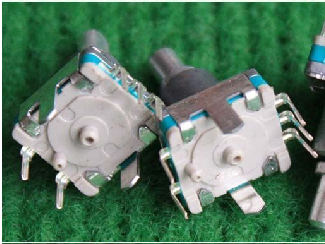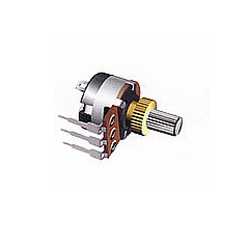YILI Electronic is specialized in potentiometer, rocker switches, tact switches and rotary switches.
YILI Electronic produces adjustable resistors, trimmer potentiometer, Straight key switches etc.
What is a rotary switching potentiometer?
Firstly, the potentiometer is generally composed of a shell, a sliding shaft, a resistor and three lead-out terminals. There are many kinds of potentiometers, which can be divided into rotary (or rotary) potentiometer and direct sliding potentiometer according to the regulation mode. It can be divided into single-connected potentiometer and multi-connected potentiometer according to the number of links. In addition, it can also distinguish whether there are switches or not. Therefore, it is commonly called rotary switched potentiometer for distinguishing potentiometers with switches. So the following is the use of rotary switching potentiometer explained by Youxingda Electronics.
Adjustment Method of Rotary Switched Potentiometer
For the regulation method of rotary switching potentiometer, it usually has positive and negative symmetrical power supply in the circuit of the device. First, when the central contact C of the potentiometer slides to the potentiometer A, the output voltage of OUT to the ground is + 12V. On the contrary, when the central contact C of the potentiometer slides to the potentiometer B, the output voltage of OUT to the ground is - 12V. The output C of the potentiometer can be adjusted in the range of 0- V. Therefore, the volume of the potentiometer's central contact C is the smallest when it slides to potentiometer B, and the volume of the potentiometer's central contact C is the largest when it slides to potentiometer A. Finally, when the potentiometer's central contact C reaches to potentiometer B, it will lead to poor contact and other phenomena, which will cause the regulated volume of the potentiometer can not be closed.

Fault Problems and Repair Methods of Rotary Potentiometer
1. When the multimeter is used to detect the fixed pin ends on both sides of the potentiometer, if the deviation between the measured resistance and the nominal resistance is too large, it may be that the pin ends of the potentiometer have short-circuit faults. So for dealing with this kind of fault, Xiaobian suggests that we generally choose to replace potentiometers. Generally, it is inconvenient to repair, because the pin internal short circuit and other faults are due to some internal components have been damaged, even if repaired, in use, the resistor will be severely burnt open due to overcurrent.
2. As for the common faults of potentiometers, there is a relatively large rotational noise when they are regulated. The main reason is that the wear of the resistor leads to bad contact between the contact point of the movable plate and the resistor, which leads to the overshoot or overshoot of the resistance value, resulting in noise when they are regulated. So for the method of dealing with the noise fault of potentiometer, first, the potentiometer can be disassembled, and then a point of industrial lubricant is added on the rotating shaft of potentiometer. Its purpose is to reduce friction while adjusting the rotating shaft and thus reduce the wear of resistors, so that this kind of noise fault can be eliminated in the use of potentiometer.
Cautions for Use of Rotary Switched Potentiometer
1. Before using the potentiometer, we must carefully check whether the potentiometer is good or bad, such as whether the lead-out terminals between the pins of the potentiometer are loose, and whether the contacts are good and reliable. Otherwise, the use of potentiometers with faults will not only affect the normal operation of equipment circuits, but also may cause damage to other components in the circuit.

2. When the potentiometer is installed in the circuit, more attention should be paid to the correct connection of the three pins of the potentiometer. If there is a wrong connection, the use of the potentiometer may lead to some failure of volume regulation or inactive volume regulation.
3. In addition to rotary switching potentiometers, there is a push-pull switching potentiometer in the market at present, so for the selection of these two types of potentiometers with different specifications, we should distinguish clearly to use.